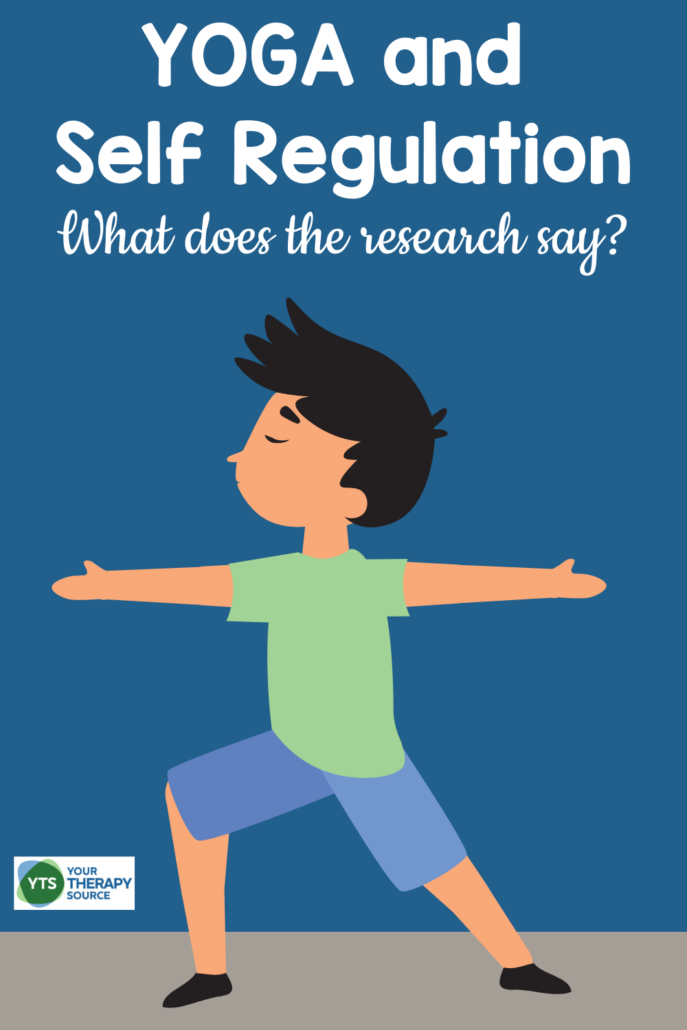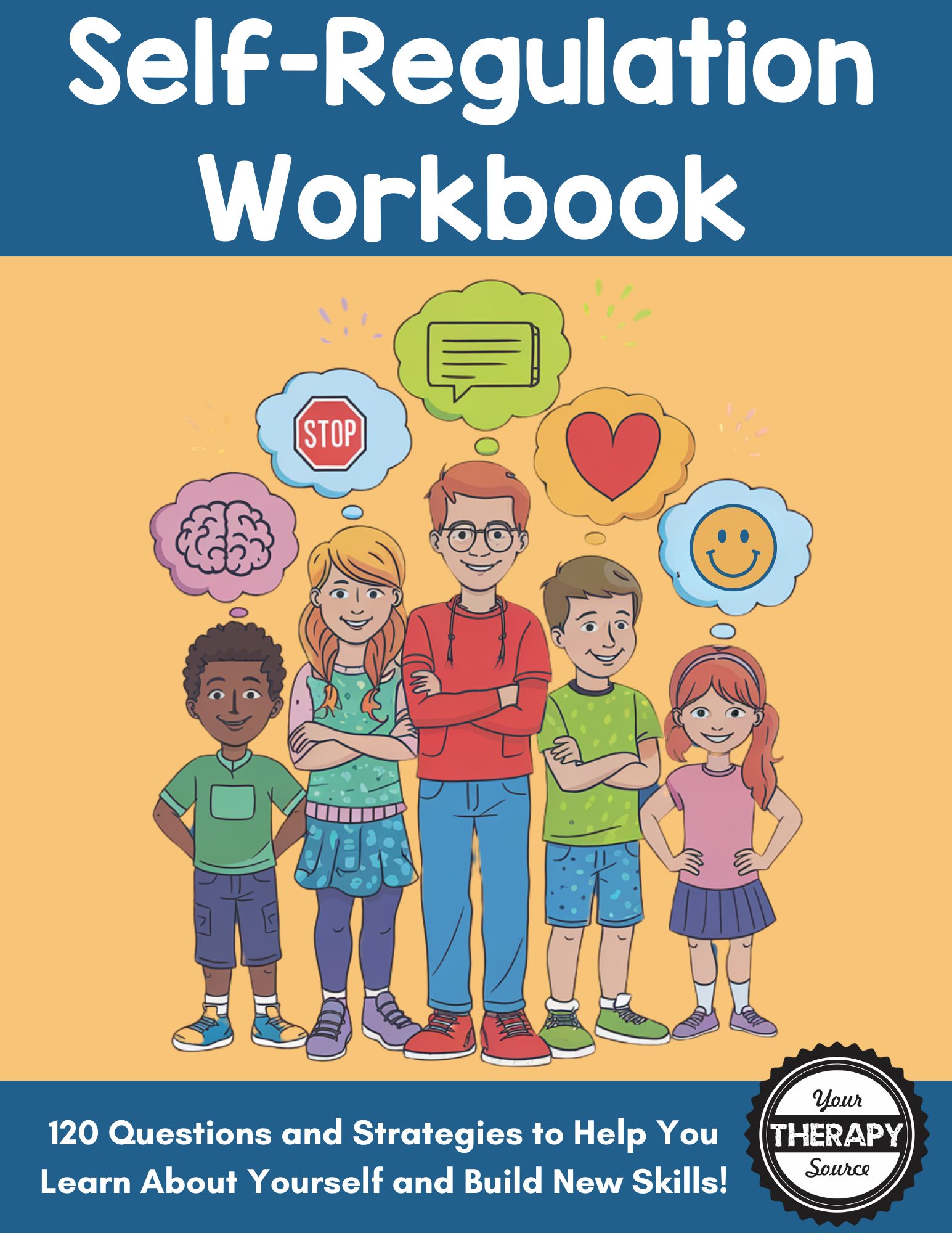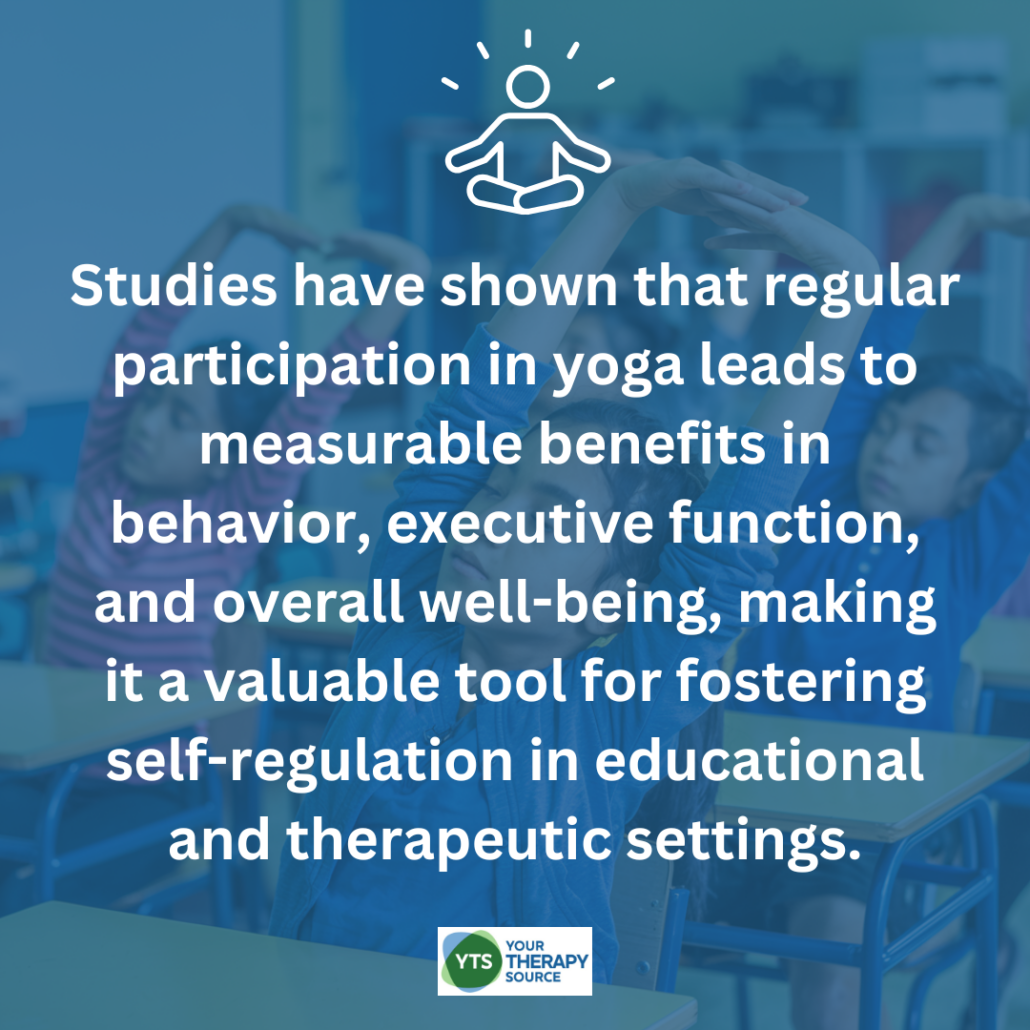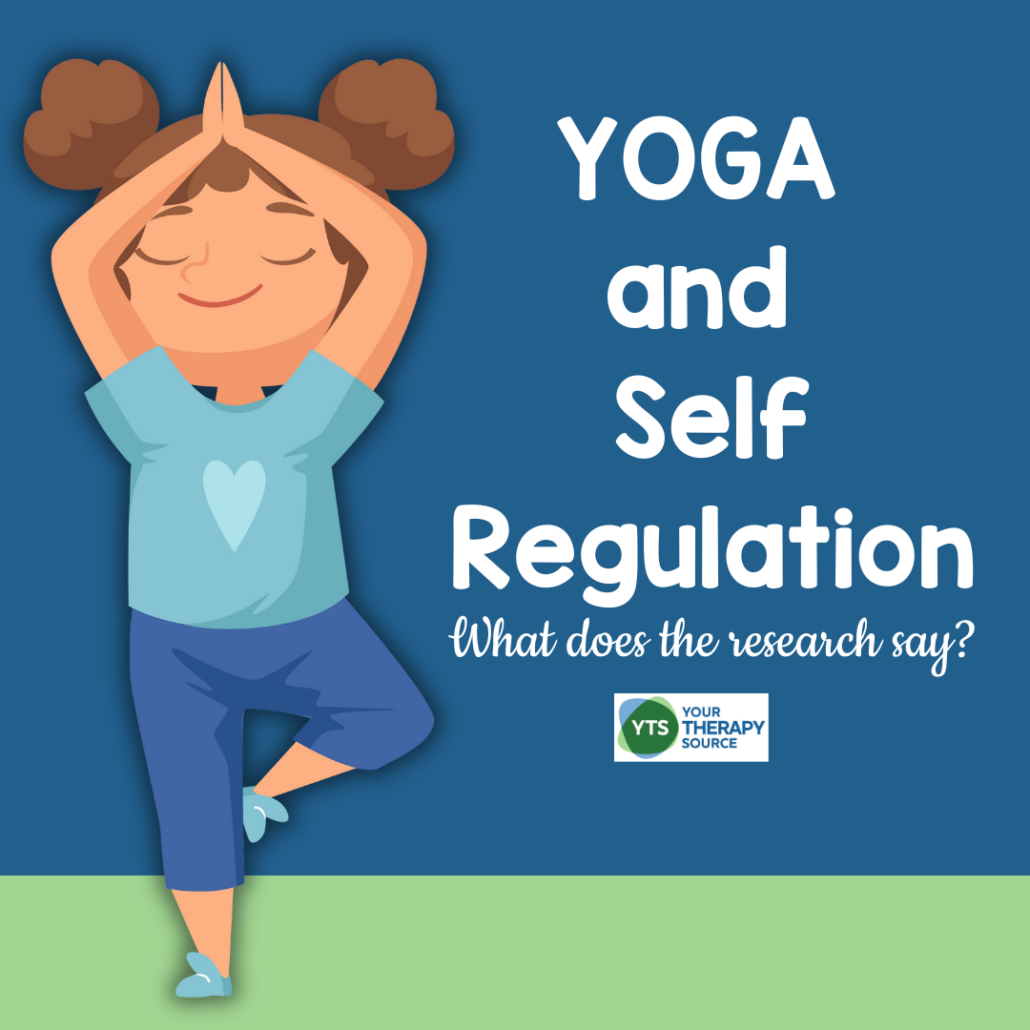Yoga and Self Regulation
Self-regulation is a critical skill that enables children to manage their emotions, behaviors, and attention. It influences their ability to adapt to challenges, engage in learning, and develop healthy relationships. Recent research highlights the benefits of yoga as an effective tool to enhance self-regulation across all ages, from preschoolers to adolescents. Learn more about the connection between yoga and self regulation and practical ideas for why teachers, parents, school-based occupational and physical therapists, school counselors, PE teachers, and other educators should incorporate yoga into children’s daily routines.

Why Yoga Supports Self-Regulation
Yoga is a body-mind practice that combines movement, breathing exercises, mindfulness, and relaxation techniques. Studies show that these elements can help children regulate their emotions, improve focus, and reduce stress—key components of self-regulation.
Scientific Evidence Supporting Yoga for Self-Regulation
- Research on yoga and mindfulness programs for preschoolers indicates that these practices can enhance behavioral self-regulation and executive function. A systematic review of studies involving preschool-aged children, ages three to five, found that yoga improved children’s ability to manage emotions and behaviors, especially when practiced for at least six weeks (Sun et al., 2021).
- A study focusing on economically disadvantaged pre-kindergarten and kindergarten students found that an eight-week yoga intervention led to improved self-regulation and a decrease in behavioral problems. Teachers observed a reduction in submissive venting, or passive emotional outbursts, and overall problem behaviors, suggesting that yoga provides young children with effective tools to manage stress and emotions (Rashedi et al., 2021).
- A meta-analysis examining universal self-regulation interventions across different age groups found that yoga and mindfulness programs contributed to significant improvements in self-regulation skills. Additionally, these interventions positively impacted academic achievement, social skills, and behavioral outcomes (Pandey et al., 2018).
- Sixth grade students who participated in mindful yoga demonstrated significant increases in both global and long-term self-regulation compared to the control group of students. There were no significant changes in short-term self-regulation (Bergen-Cisco et al., 2015).
- A randomized controlled trial explored the impact of yoga on high school students’ emotional regulation. The study compared students who participated in a 16-week yoga intervention to those in a standard physical education class. Findings revealed that students in the yoga group showed significant improvements in emotional regulation compared to their peers in traditional PE classes (Daly et al., 2015).

Self Regulation Workbook – Learn About Yourself
How to Integrate Yoga into Educational and Therapeutic Settings
Yoga is versatile and can be adapted for use in classrooms, therapy sessions, and at home. Here are practical strategies to introduce yoga into children’s daily routines.
- Quick yoga breaks can be implemented between lessons to help students refocus.
- Breathing exercises such as balloon breathing can help children manage emotions in stressful moments.
- Yoga stories can be incorporated into storytelling by linking poses with characters and events.
- Mindful movement can be included in physical education classes by replacing some traditional activities with structured yoga sessions.
- Calm-down corners can be enhanced with yoga-based relaxation techniques for emotional regulation.

How to Start a School Yoga Program
Bringing yoga into schools can be a powerful way to support self-regulation, focus, and emotional well-being in students. If you are an occupational therapist, physical therapist, school counselor, pediatric therapist, teacher, parent, administrator, PE teacher, recreation staff, social worker, kids yoga instructor, or special education teacher, you have the opportunity to create a meaningful program that benefits your school community.
One way to successfully implement yoga in schools is by using a structured, evidence-based program like the School Yoga Program. This program provides everything needed to develop a customized yoga and mindfulness initiative that aligns with your school’s specific needs. Here are the steps to get started:
- Assess Your School’s Needs – Consider the age range, student needs, and existing wellness initiatives in your school to determine how yoga can best be integrated.
- Get Stakeholder Support – Discuss the benefits of yoga with administrators, teachers, and parents to build support for the program.
- Use a Structured Approach – The School Yoga Program offers a step-by-step framework, including:
- 12 video lessons to guide program creation
- Four workbook guides with action plans
- Checklists, templates, and planning resources
- Live expert support with three group coaching calls
- Real-world examples, case studies, and interviews
- Train Staff and Educators – Provide basic training in yoga and mindfulness so that teachers and staff feel confident incorporating it into their routines.
- Create a School-Wide Plan – Develop a schedule for yoga sessions, whether in the classroom, PE class, or as part of social-emotional learning activities.
- Evaluate and Adapt – Gather feedback from students and staff to refine the program and ensure it meets the school’s goals.
With the right tools and support, launching a school yoga program can be an achievable and impactful way to help students develop essential self-regulation skills. Explore the School Yoga Program to take the first step in bringing yoga and mindfulness to your school.
More Resources
Explore additional resources to help integrate yoga into self-regulation strategies.
- Yoga Poses for Self-Regulation
- Bedtime Yoga Sequence (Free Printable)
- Printable Yoga Poses for Kids
- Yoga Coloring Pages
Key Points on Yoga and Self Regulation
- Research indicates that across child development, from preschool to adolescence, yoga improves self-regulation skills, including emotional regulation, behavioral control, and executive function. Studies have shown that yoga reduces behavioral problems in young children, enhances academic and social skills, and helps high school students manage emotions more effectively.
- Yoga is a practical and accessible tool that can be incorporated into schools, therapy sessions, and home routines to foster emotional resilience and self-control.
- Long-term self-regulation benefits are observed in students who engage in mindful yoga, though short-term effects may vary.
- Regular participation in yoga provides lifelong benefits that help children and adolescents manage emotions, focus attention, and navigate challenges effectively.
References
Bergen-Cico, D. et al. Fostering Self-Regulation Through Curriculum Infusion of Mindful Yoga: A Pilot Study of Efficacy and Feasibility. Journal of Child and Family Studies. November 2015, Volume 24, Issue 11, pp 3448-3461
Daly, L. A., Haden, S. C., Hagins, M., Papouchis, N., & Ramirez, P. M. (2015). Yoga and emotion regulation in high school students: A randomized controlled trial. Evidence-Based Complementary and Alternative Medicine, 2015, 1-8. https://doi.org/10.1155/2015/794928
Pandey, A., Hale, D., Das, S., Goddings, A. L., Blakemore, S. J., & Viner, R. M. (2018). Effectiveness of universal self-regulation–based interventions in children and adolescents: A systematic review and meta-analysis. JAMA Pediatrics, 172(6), 566-575. https://doi.org/10.1001/jamapediatrics.2018.0232
Rashedi, R. N., Rowe, S. E., Thompson, R. A., Solari, E. J., & Schonert-Reichl, K. A. (2021). A yoga intervention for young children: Self-regulation and emotion regulation. Journal of Child and Family Studies, 30, 2028-2041. https://doi.org/10.1007/s10826-021-01992-6
Sun, Y., Lamoreau, R., O’Connell, S., Horlick, R., & Bazzano, A. N. (2021). Yoga and mindfulness interventions for preschool-aged children in educational settings: A systematic review. International Journal of Environmental Research and Public Health, 18(11), 6091. https://doi.org/10.3390/ijerph18116091



